Authors – Dr Nicola Weber (Project Leader) and Jack Wiggins (Graduate Research Assistant)
In 2019, a team of researchers from the University of Exeter, Government of Montserrat and Marine Conservation Society were awarded a Darwin Initiative grant to create and implement a Marine Turtle Action Plan on the UK Overseas Territory of Montserrat. The global pandemic delayed a number of the outputs, but we are now excited to bring you our first update from the field!
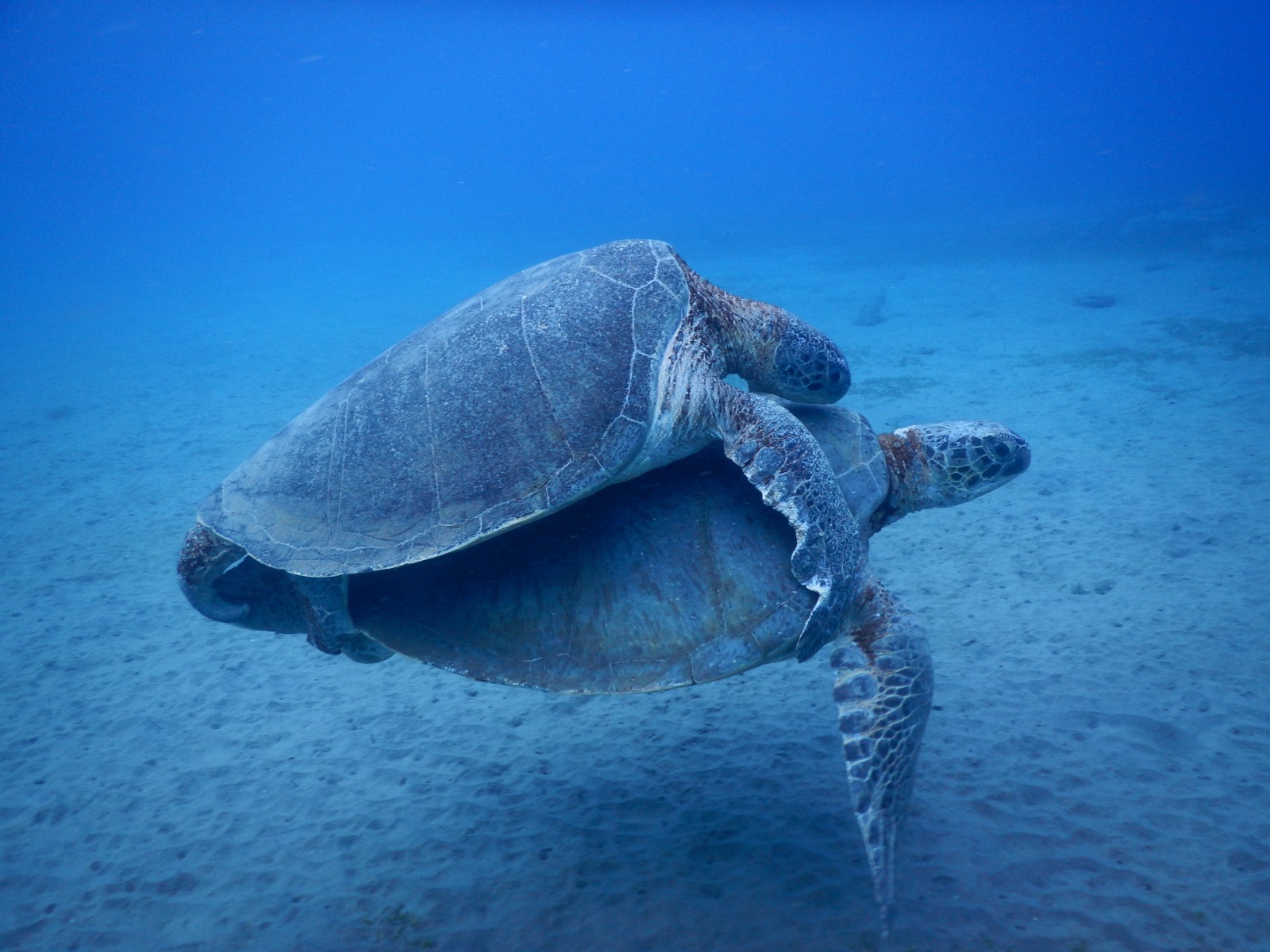
Lead researchers Dr Sam Weber and Graduate Research Assistant Jack Wiggins from the University of Exeter arrived in Montserrat in June to work alongside staff from the Government of Montserrat and members of the Marine Conservation Society during the turtle nesting season. The project funded by Darwin Initiative will collate both social and biological data to help conserve and manage marine turtle populations around Montserrat. The island supports regionally important populations of green and hawksbill turtles and also gets occasional visits from loggerhead and leatherback turtles.
Graduate Research Assistant, Jack Wiggins provides an update from the island:
Arrival in Montserrat
“It’s nearly over a month since we arrived in Montserrat, and what a month it has been. Twenty minutes after departing Antigua in a tiny six-seater aircraft we arrived in Montserrat and were picked up by Montserrat’s Chief Fisheries Officer, Alwyn Ponteen, and taken to our quarantine villa. From here, we looked over the calm, clear and turquoise waters of Isles Bay – a key mating and nesting site for green sea turtles. We would sit on the balcony, binoculars glued to our faces looking out over the bay watching mating turtles, pelicans diving bombing into the water for food and frigate birds tracking shoals of bait fish further offshore itching to get out and explore the island. After five days of mandatory quarantine and receiving our negative PCR test results we were free to explore “The Emerald Isle of the Caribbean”. On the first day, our host, Chief Fisheries Officer at the Government of Montserrat, Mr Alwyn Ponteen, took us on an island tour where we visited a dozen of the islands’ turtle nesting beaches and tried out some of the local delicacies Montserrat has to offer. The next day we would start our night-time beach surveys with local legend Mr John Jeffers who has been monitoring turtle nesting activities in Montserrat for over 30 years.”
Night-time nesting surveys
“Over the past few weeks, we have been conducting night-time nesting surveys to help understand how many individuals are nesting along the coast of Montserrat. To do this, any nesting female turtles we have encountered laying, we have inserted a PIT tag – a small microchip like those used for cats and dogs – into the right shoulder of the turtle and also attached two flipper tags. Each tag has a unique number so if a researcher, fisher or member of the public encounters a tagged turtle in the future (be it on Montserrat or further afield) and can record the tag number we will know exactly which turtle was encountered and where. Tagging nesting females can help us to understand how many adult females there are in a population which can also help us to keep track of whether the population is growing or shrinking over time.”
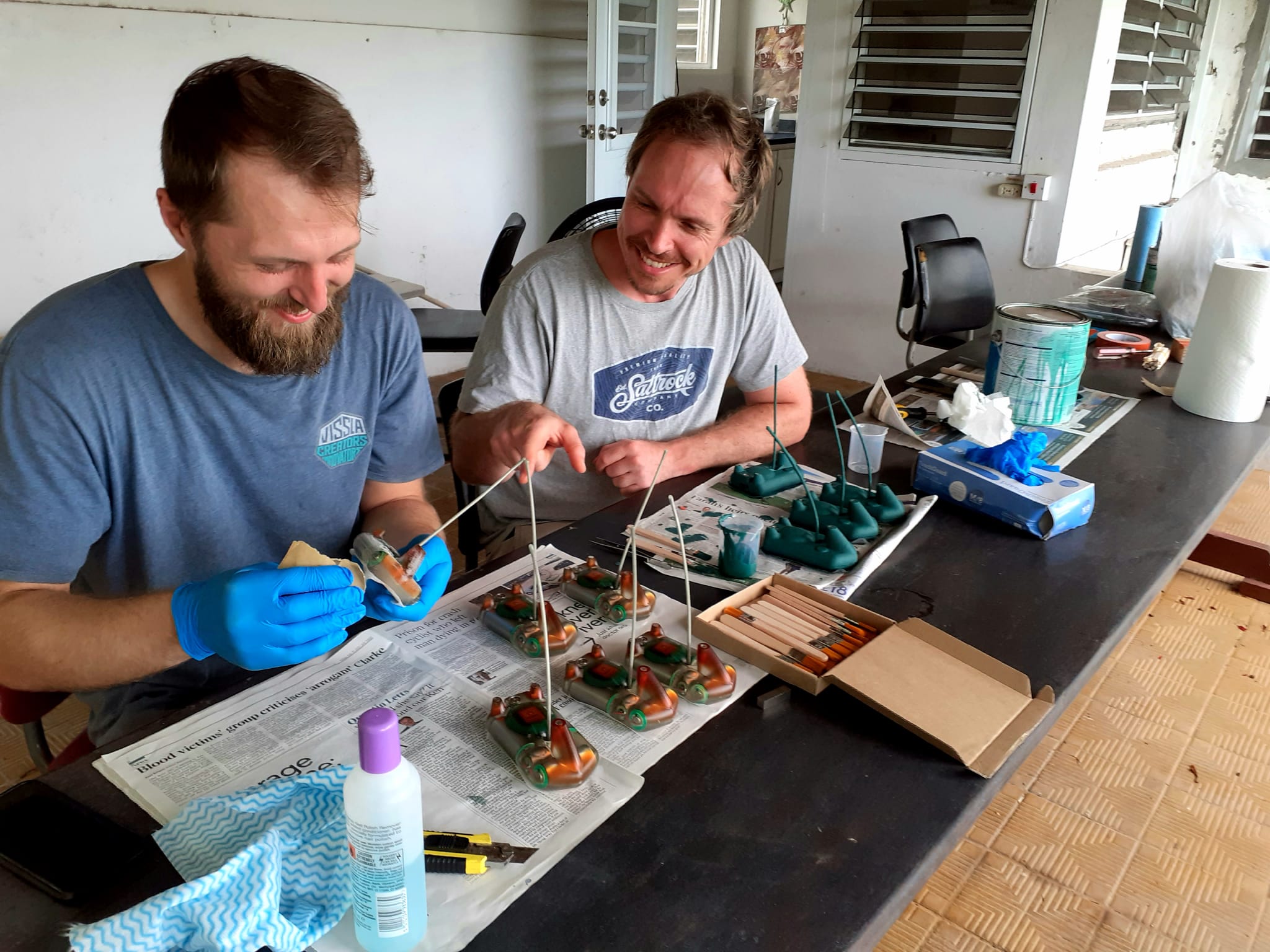
The research grant has funded 10 satellite telemetry devices for the researchers to attach to adult female turtles nesting on Montserrat’s beaches. This state of the art technology allows us to gain an understanding of the movements of these turtles both around Montserrat during the nesting season and then during their migration back to their feeding grounds. Identifying patterns of space use provides the evidence base needed for managing and protecting important marine areas, for example by regulating boat traffic and fishing activity in areas where turtles are congregating or mating around during the nesting season. Only one turtle from Montserrat has previously been tracked with a satellite telemetry device so there is much excitement around these recent deployments.
On average, female green and hawksbill turtles will reproduce every 2-3 years and lay over 3 clutches of eggs within a single nesting season. Each clutch can contain between 100-200 eggs and can take between 45- 60 days to incubate. After a female has finished laying for the season, she will migrate back to her foraging grounds where she will remain for 2-3 years until she has built up sufficient energy reserves to reproduce again and repeat the cycle.
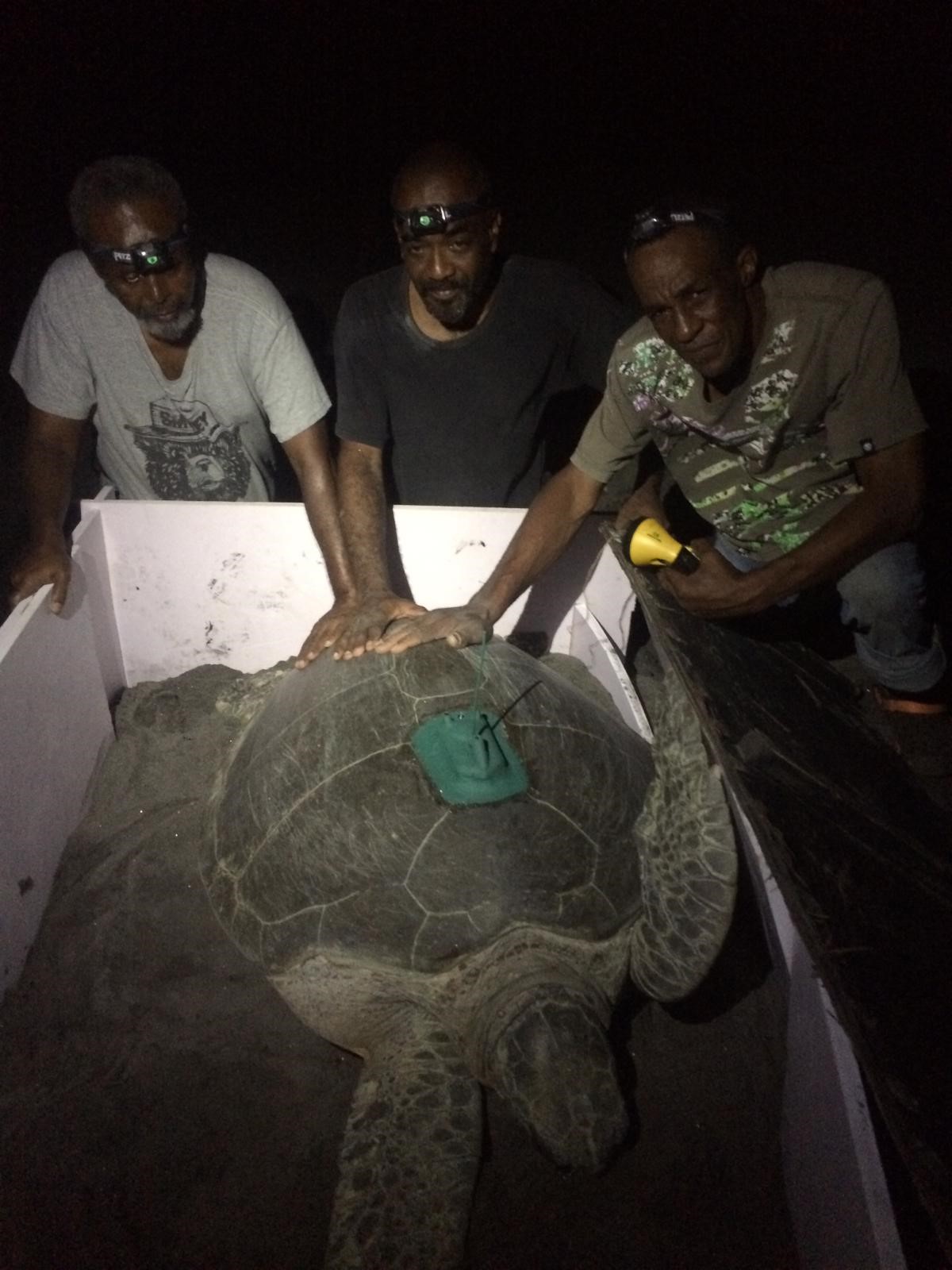
The University of Exeter and Government of Montserrat field team managed to deploy all ten of the satellite transmitters within 2 weeks, which involved many long nights spent waiting on the beaches until females had finished laying and covering their eggs. The turtle was held in a pen while the device was attached to the back of her carapace (shell) using epoxy resin glue, as you can see in the photos. When the turtle comes to the surface to breathe, this device will send a message to a satellite containing data that can be used to determine the location of the turtle. Excitingly, this can be viewed online in real-time here.
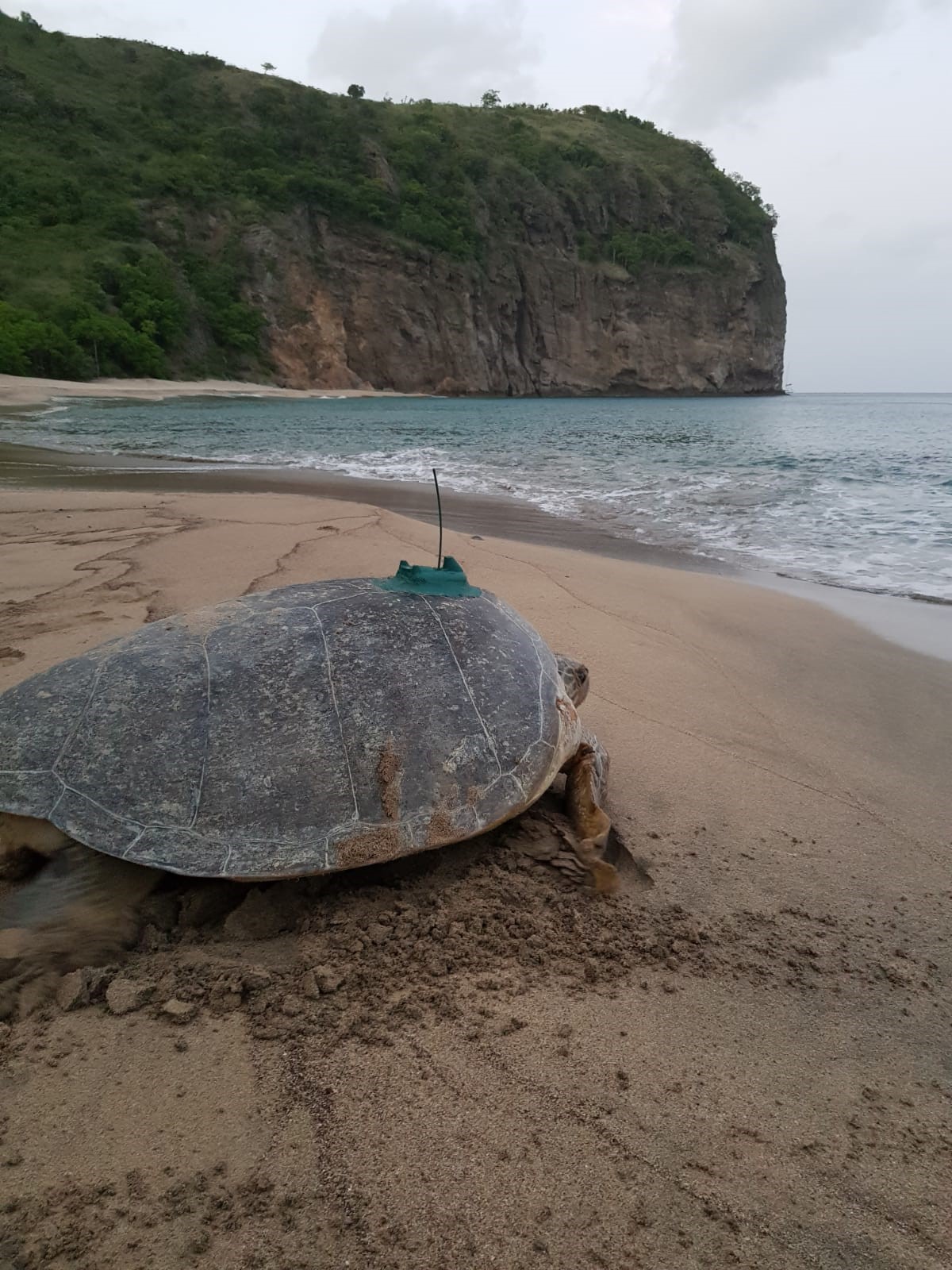
The accuracy of raw locations received from the satellite-based location system can vary depending on the number of messages received from the transmitter, environmental conditions, and the relative positions of the transmitter and satellites. That is why when the turtles are close to shore they can appear to be located on land, but, other than when they are nesting, they definitely are not! Once all of the data have been collected, a range of analytical tools and filters are used to process these locations and produce a ‘clean’ map; but it is very exciting being able to get an idea of their locations in real-time. At the time of writing this blog post, one turtle (Laynakiki) has begun her migration and has passed close by Guadeloupe and Dominica! These tracks will provide us with a fascinating insight into the secret lives of these turtles once they have left Montserrat’s shores.
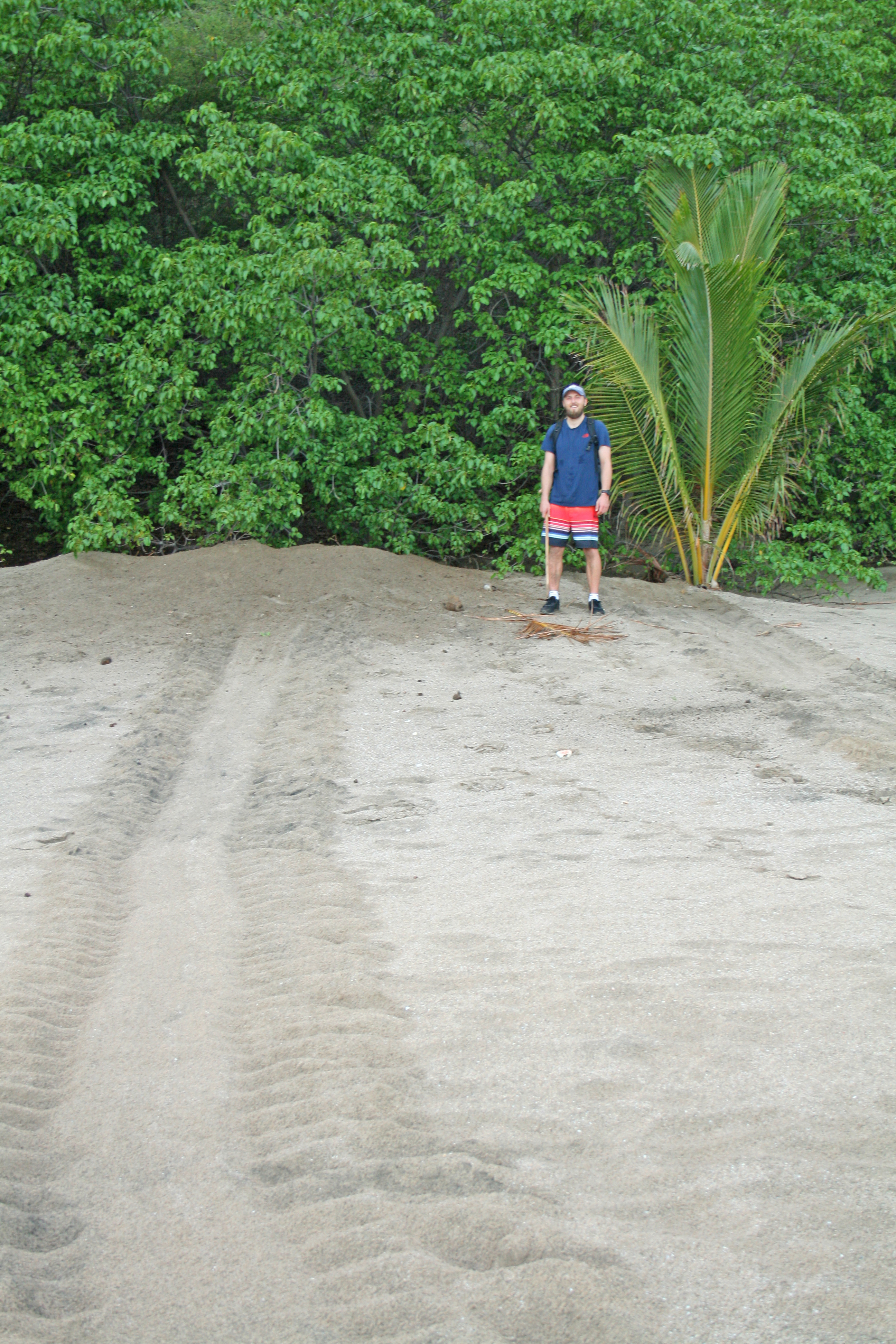
What’s next?
Jack will remain on island, based with the local Government of Montserrat team until the end of this turtle nesting season in October. The team is continuing with some night-time surveys and tagging nesting females with flipper and PIT tags if encountered, but will mainly be focusing on conducting day-time beach counts, which is the most efficient method for estimating the nesting population size. During the mornings, Jack alongside local Project Officers, Data Collectors and Youth Trainees will be patrolling the nesting beaches to count how many nesting activities occurred the night before and to take GPS locations of any nests laid. Taking GPS locations of nests helps us to identify nesting hotspots around Montserrat and better understand which beaches are key nesting sites that should be monitored more frequently. The on-island team will also be monitoring nest productivity – counting how many turtles emerge from the nests both routinely in the hatchery and opportunistically on the nesting beaches.
All of these different aspects of biological research will inform the Marine Turtle Action Plan for Montserrat which will be written after another full season of data collection next year. This is also being informed by knowledge and views of the local community through project partners – the social science team at the Marine Conservation Society. You can read more about this at their blog.
#ExeterMarine is an interdisciplinary group of marine related researchers with capabilities across the scientific, medical, engineering, humanities and social science fields. If you are interested in working with our researchers or students, please visit our website!
